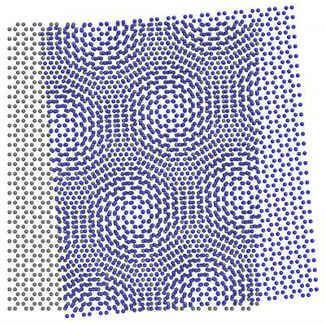FDA to Determine Health Significance of Low Furan Levels in Foods
The Food and Drug Administration today announced that it will embark on a thorough scientific assessment of the health significance of very low levels of furan -- a chemical that is produced through the heating process - in certain foods. FDA has initiated this process through a notice on display today at the Office of the Federal Register. The notice solicits scientific data and announces a June 8, 2004, Food Advisory Committee meeting on furan.
Some animal data suggests that high levels of furan exposure might have a carcinogenic effect in humans, but its true effects in humans - especially at such very low levels -- are not known. A new method developed by FDA scientists has revealed that very low levels of furan are found in a wider range of foods than previously suspected. FDA scientists discovered that furan forms in a variety of foods that undergo heat treatment, including certain canned and jarred foods. FDA tested a variety of foods and the results ranged from non-detectable levels in some foods to approximately 100 parts per billion in other foods.
"FDA will continue to thoroughly evaluate its preliminary data and conduct additional studies to better determine the potential risk. Until more is known, FDA does not advise consumers to alter their diet," said Dr. Lester M. Crawford, Acting FDA Commissioner.
"We need to learn more about whether furan, particularly at these very low levels, poses any significant problem to human health. It's important to stress that FDA's preliminary estimate of consumer exposure is well below the level that would be expected to cause harmful effects," said Dr. Robert Brackett, director of the FDA's Center for Food Safety and Applied Nutrition.
FDA is soliciting information on the best available and most-up-to-date science on furan including human exposure, why furan forms in certain foods, and the effect of furan on humans at the low levels found in food.
FDA is holding the June 8, 2004, Food Advisory Committee meeting to seek the committee's expert input on the data necessary to fully assess the risk posed by furan.
After the advisory committee meeting, and after evaluating all the available data, FDA will decide on the appropriate next steps, which may include an expanded food survey, studies to address how furan forms in foods, potential strategies to reduce furan levels, and toxicology studies to address mechanisms of toxicity and dose response.
Most read news
Organizations
Related link
Other news from the department science

Get the chemical industry in your inbox
From now on, don't miss a thing: Our newsletter for the chemical industry, analytics, lab technology and process engineering brings you up to date every Tuesday and Thursday. The latest industry news, product highlights and innovations - compact and easy to understand in your inbox. Researched by us so you don't have to.




























































